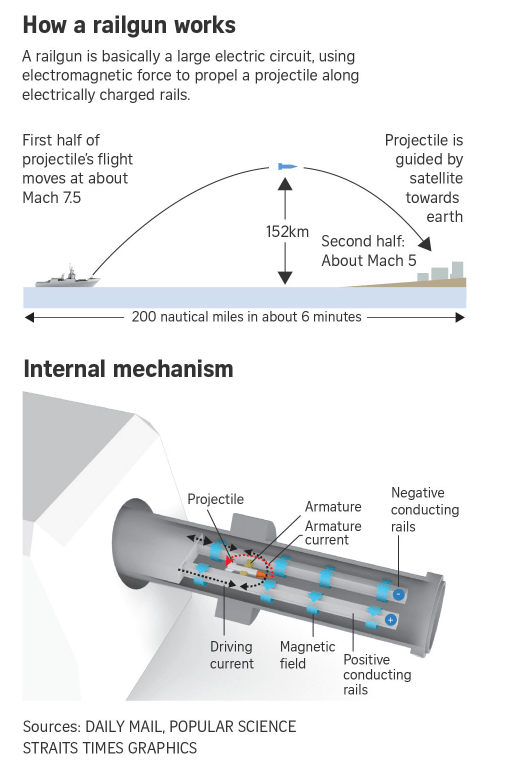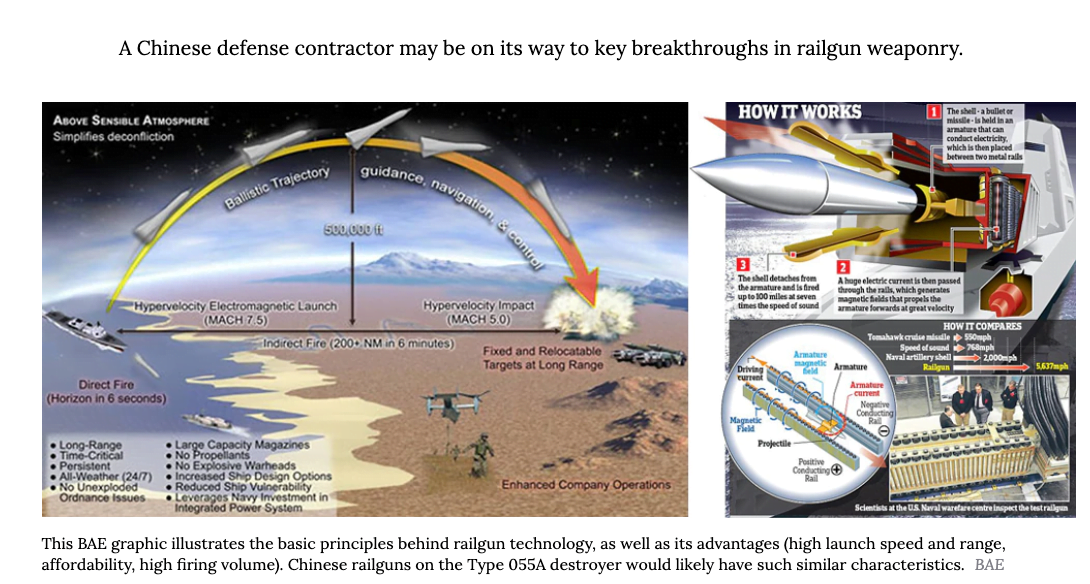By Debalina Ghoshal
There is no doubt that China is working on sophisticated weapon systems.
While China is modernising its nuclear forces, it is also not neglecting its conventional firepower.
For example, China is working on electromagnetic technologies with the objective of fielding electromagnetic weapons for its ground, naval forces as the initial services to do so with the Air Force to follow later as the technology evolves.
In August 2018, there were reports that China is developing an electromagnetic surface-to-surface rocket with long firing range capability. The gun when fielded would provide China greater capability in high-altitude regions like Tibet and Himalayas. Their range though not specified, is believed to be greater than the range of China’s 150kms range rocket systems providing Beijing the leverage to fire the rocket away from the plateau region.
According to reports, China’s Navy has already tested sea launched versions of the gun in 2018 and the warship mounted gun is expected to enter service in 2025. The naval gun has a range of 200kms approximately. If reports are true, China had already successfully mounted the gun on a warship in 2017 itself.
Electromagnetic catapult systems could enable the rocket to reach greater range with an increased velocity thereby further making it difficult to intercept the rocket system. Rocket, Artillery and Mortar (RAMs) are most difficult to be intercepted and high velocity would only make the task of defending against these rocket systems further difficult.
In addition, rockets can be fired in several numbers in salvos that would make interception further difficult. These guns are also cheaper than guided missiles. This is reported to enable the gun to attack targets over much broader area and can launch projectiles at hypersonic speeds. The projectile is placed on an armature between two conductive rails following which an electric charge is driven into the rails resulting in two magnetic fields form to create ‘Lorentz force’ blast.

One of the advantages of electromagnetic rocket systems is that conventional firepower uses powder and fails to sometimes perform according to expectations at high altitudes due to the lack oxygen.
Electromagnetic artillery rockets negate this disadvantage by using electromagnetic force making them suitable weapon system for mountain and plateau regions where oxygen content in the atmosphere is less. The use of electromagnetic force enables the rocket to fly smoother and hit targets more accurately.
Such a system has an advantage for airborne platforms as airborne platforms may also find it difficult to cater to enough oxygen.
Increased range of these rockets would enable aircraft carriers to remain farther from enemy targets thereby increasing their chances of survivability.
These electromagnetic rockets are also reported to be more precise and stable during launch with increased maneuverability in comparison to conventional rockets at lesser cost than conventional rockets. The electromagnetic guns can help perform missile and air defence roles, anti-invasion missions and also can attack anti-aircraft missile systems thus increasing both China’s offensive and defensive capabilities.
Also, electromagnetic catapult would allow more number of fighter jets to take off in a shorter interval of time boosting the jets’ combat capabilities. The catapult would be capable of launching heavier fixed wing planes that include airborne early warning and control aircraft that would help them gather more real time battlefield information.
Deploying the land-based version in reportedly Qinghai-Tibet plateau region would strengthen China’s conventional deterrence vis-à-vis India.
China is reported to have large areas of mountains and plateaus that could be invaded by adversaries and hence, rocket artillery would allow destruction of these forces from a considerable range with lesser involvement Chinese soldiers.
In the plateaus, temperatures are extremely low during winters and the atmosphere is thin with much low air pressure than at the sea-level. This means tail-fins could find it difficult to generate adequate force to control a conventional rocket’s position during flight affecting its precision.
India and China have had stand-offs especially as seen in the Dokhlam issue and such cases, such weapon systems would prove fruitful for China to deter India’s conventional capabilities.
Naval guns especially would be a useful conventional capability in the South China Sea as well as in the East China Sea. Such guns would also limit China’s need to forward deploy large quantities of heavy explosive tipped shells that would increase the safety of the naval vessels and reduce logistic costs.

This would allow the ships to remain at sea for longer time with lesser need for resupply and reduced burden of sea replenishment operations.
Development of electromagnetic weapon systems is challenging. China has been experiencing several failures and conducted ongoing tests to check the credibility of the weapon system.
There is a signifiant challenge associated with electromagnetic guns, and rockets.
China would need adequate electricity and this could be a challenge for China especially when ships is on sail.
Perhaps one technology source for the electromagnetic technologies comes from a foreign acquisition.
China’s railway firm ZhouZhou CRRC Times Electric acquired the British semiconductor company Dynex Semiconductor in 2008.
The British company produced insulated-gate bipolar transistors, a component critical in railguns and catapult type technologies.
Debalina Ghoshal is Non Resident Fellow, Council on International Policy and an AsiaPacific Fellow, EastWest Institute
For the featured photo, see the following:
See also the following:
https://www.popsci.com/an-electromagnetic-arms-race-has-begun-china-is-making-railguns-too/


